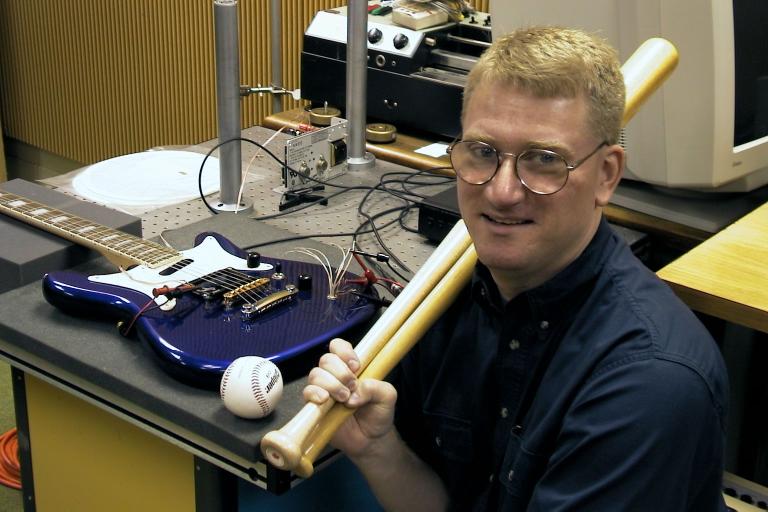
Visualizing has become the hot new trend in goal setting, spiritual questing and successful entrepreneurial enterprises -- but physics? Yes, visualizing sound is the hottest new trend in the study of acoustics too.
Dr. Dan Russell, associate professor of Applied Physics at Kettering University, has made acoustics so much fun, and so accessible to the non-scientist, that his website was recently chosen as one of Yahoo!'s Picks of the Week.
Russell's site is full of links to technical topics like "Fourier Decomposition" and "Damped Harmonic Oscillator," but on closer inspection the links include animations that actually SHOW the principles of physics that make up acoustics. The animations help explain such things as the physics behind that satisfying whack you get when the baseball hits the bat's "sweet spot."
"It's all very exciting," said Russell, who found out about the Yahoo! review from an email message referencing his Pick of the Week status in late August.
During the first two weeks following the review the site received about 25,000 hits, according to Russell.
"Ironically, I only put a counter on the site the Friday before the review," he said.
Hits now number around 4,000 per week and include about 30-40 college professors using it as part of the course curriculum and a fourth grader who asked to use one of the animations for a school science project.
On the heels of Yahoo!'s review the website was featured in the Aug. 31 edition of Science Magazine. The magazine included a stop-frame replication of a student project illustrating the vibration of an electric guitar tapped with a small hammer.
Russell developed the site to help him teach acoustics. "The animations get across the concepts better than two-dimensional drawings in a text book," he said. "I built my first computer animation related to acoustics in graduate school in 1994. I got the bug from my graduate adviser who suggested I make a visual to explain scientific principles. It actually helped me better understand the equations involved in my Ph.D. thesis."
Recognizing the potential of animations to explain physics in the classroom, Russell now uses his web site as a pre-lab worksheet for students so they understand the concepts before they attempt laboratory experiments.
Originally a music major, Russell combined his love for physics and music into the study of acoustics.
"I didn't want to teach piano all my life," he said, "and I knew I wasn't good enough to perform professionally. I like acoustics because it explains how the world around me works."
For example, why a wooden baseball bat has a "sweet spot" or how an electric guitar transmits sound waves. In a laboratory full of musical instruments, baseball bats and other odds and ends from the "real world," Russell and his students become acoustical sleuths, looking for the physics principles that explain the how's and why's.
Using the Internet seemed a natural step in the process of teaching physics for Russell. "So much of what is on the web now is commercial," he said, "and that is not what I think the Internet was designed for. I think the original intent was to put useful information out there that people can use.
"I get a lot of calls from college professors who teach music, physics and engineering requesting permission to use my web site in their classrooms, and scientists from South America, Africa, Australia the Middle East and Europe contact me about helping them with equations and problems they have come across. It's gratifying to know my stuff is helpful to people in the real world," he said.